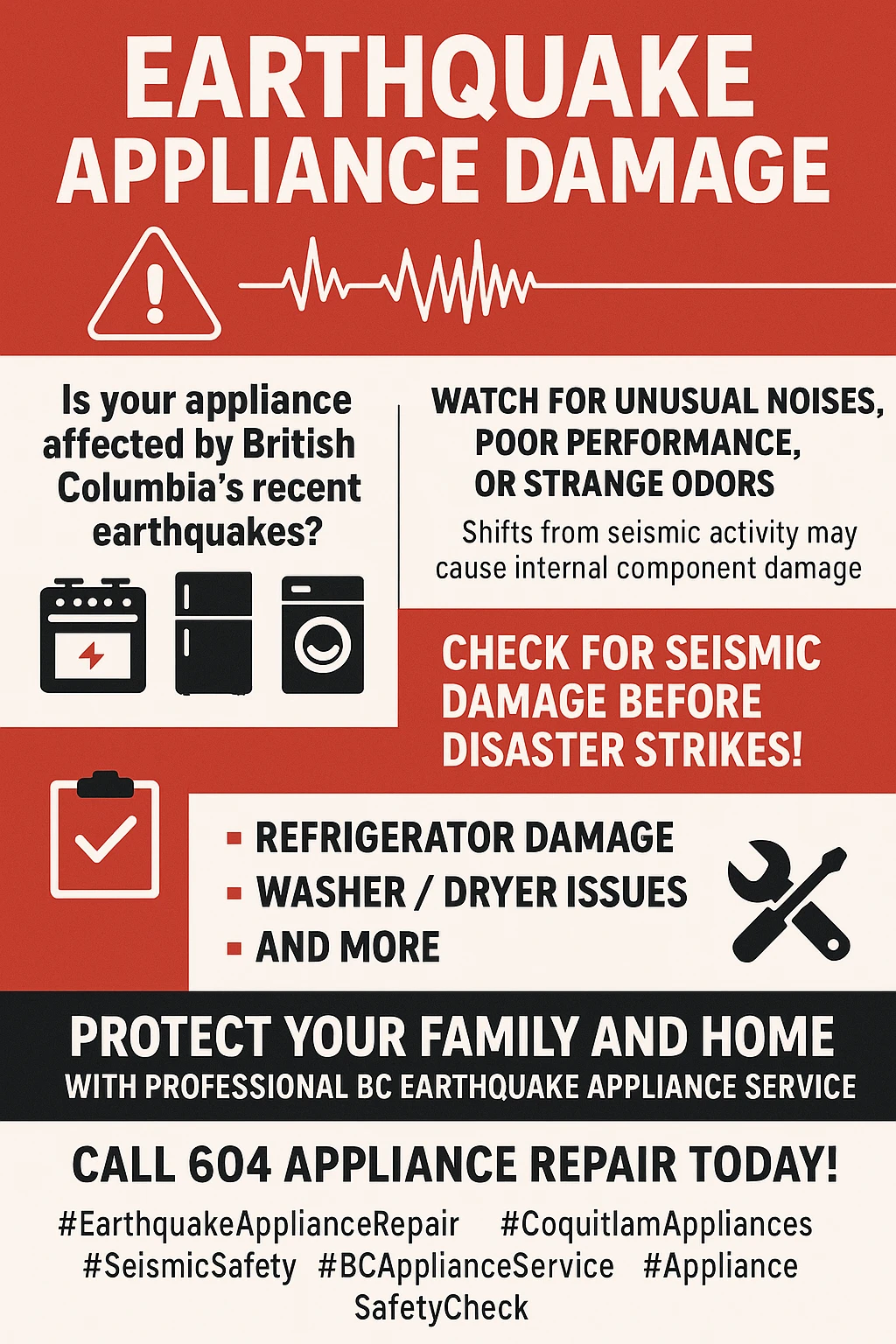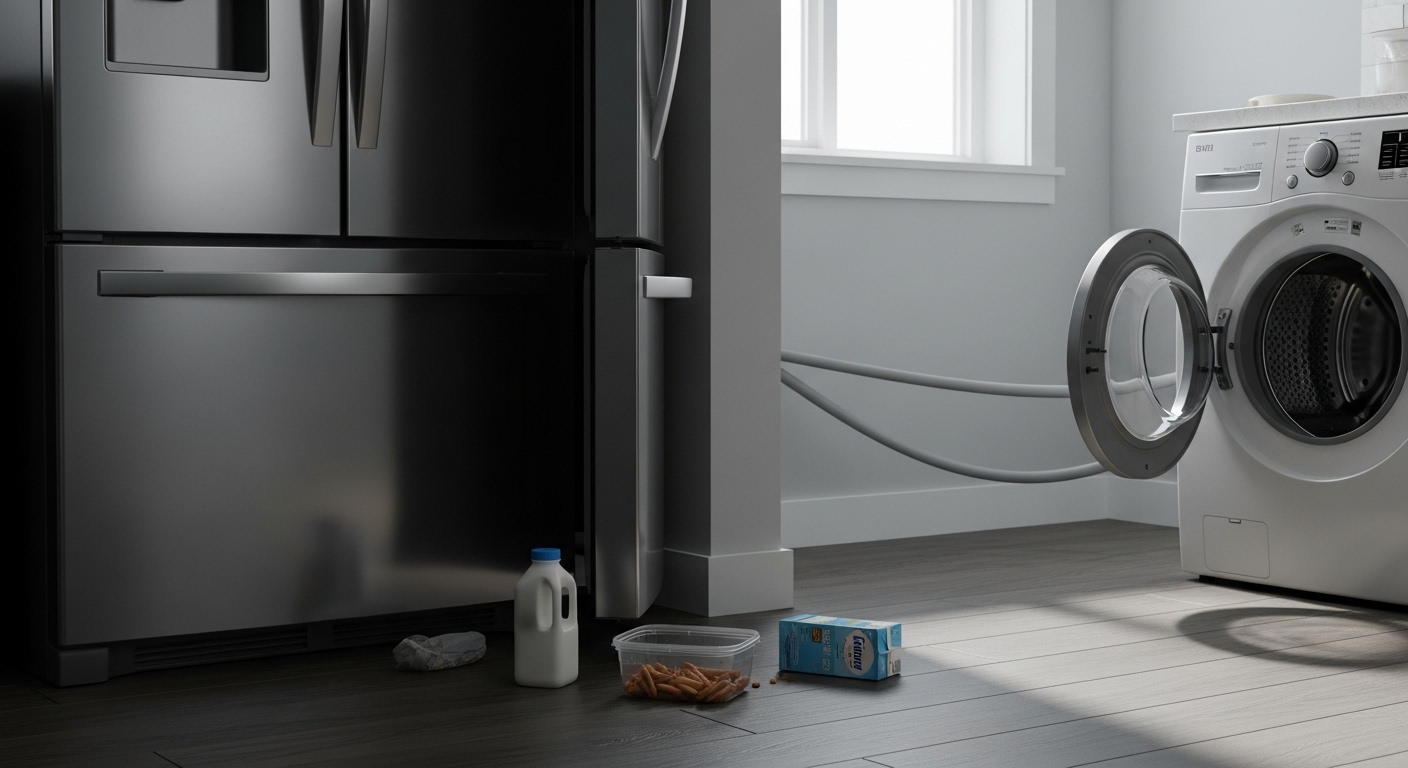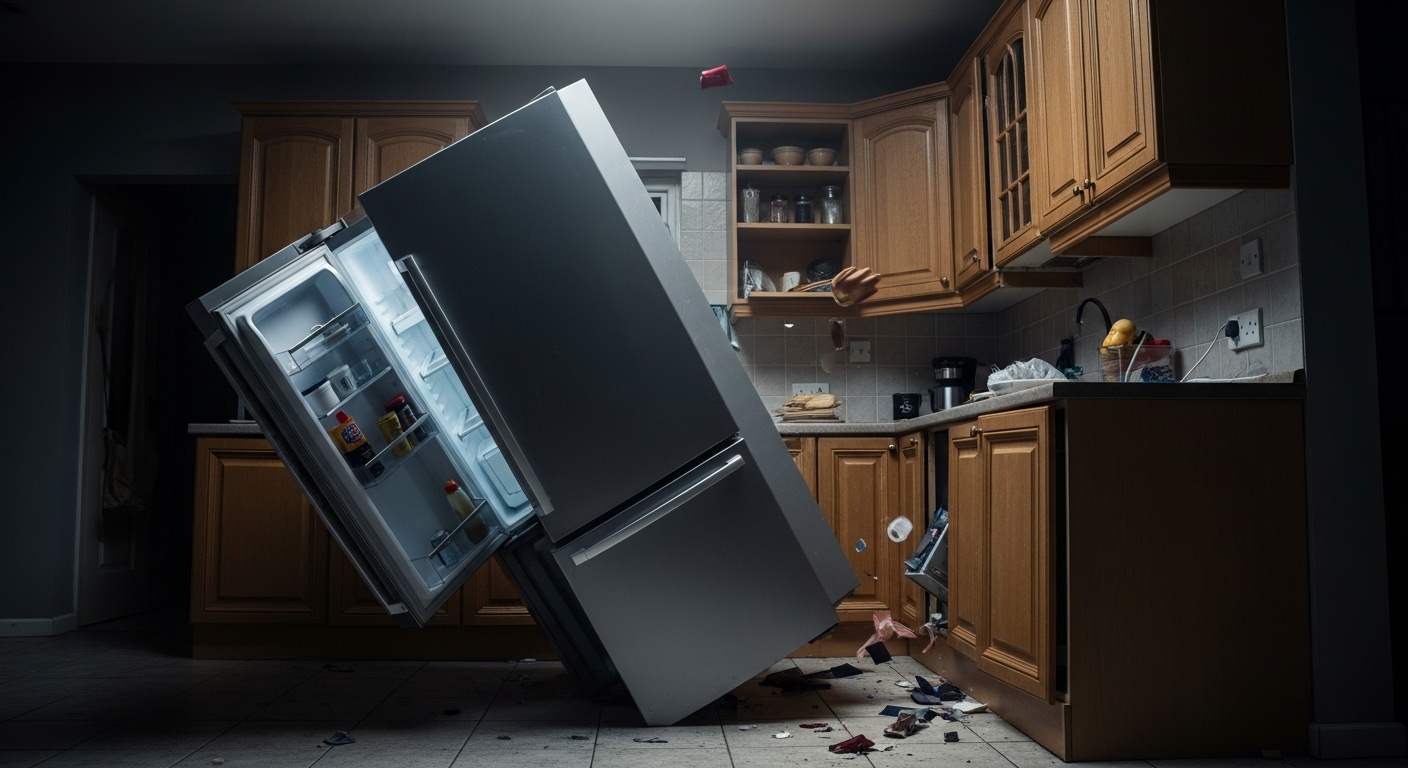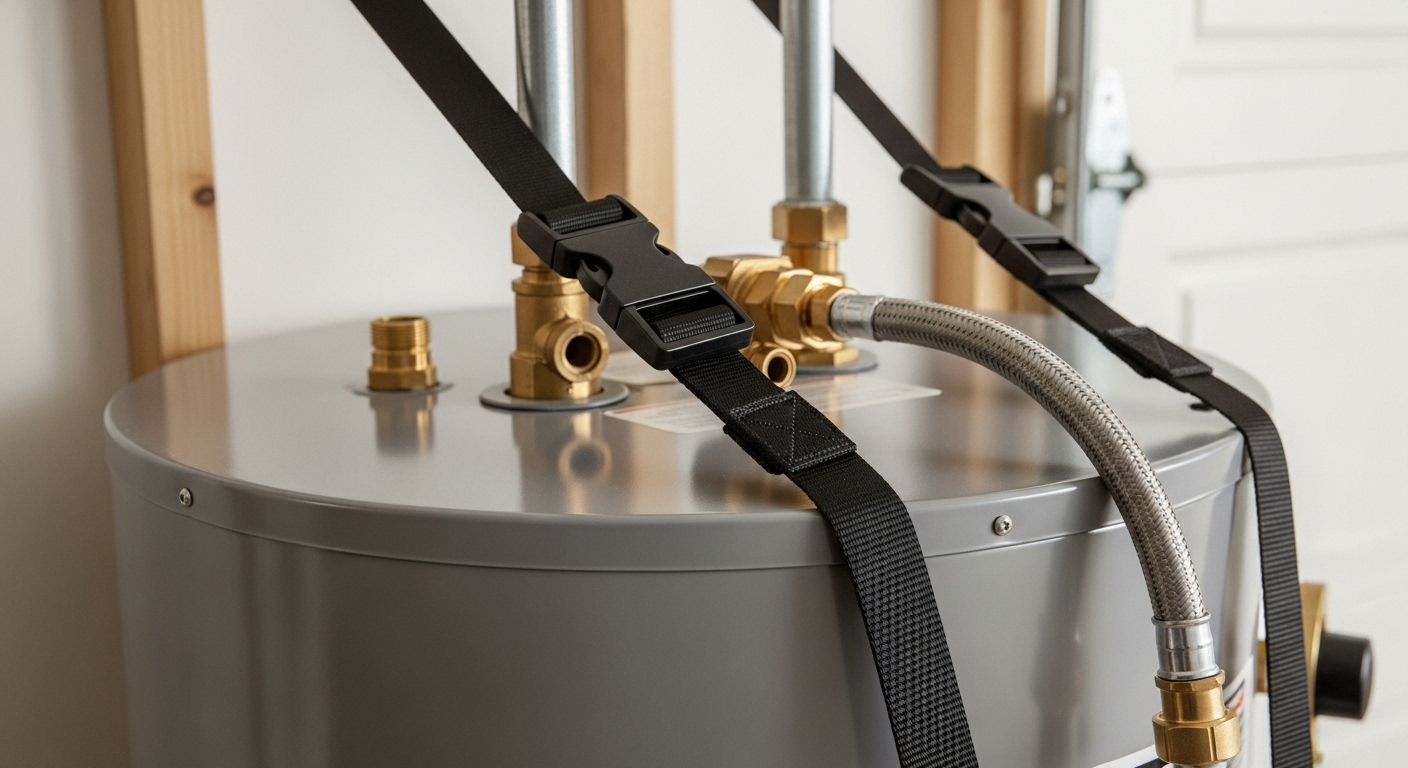
Dealing with mysterious appliance failures after Vancouver’s recent earthquakes? The hidden damage from seismic activity could be costing Coquitlam homeowners thousands in unnecessary repairs and creating dangerous safety hazards that most people never connect to earthquake activity.
Picture this nightmare scenario: you’re going about your normal routine in your Coquitlam home when you notice your washing machine has started making strange noises, your refrigerator isn’t cooling properly, and your water heater seems to be working harder than usual. Most homeowners immediately assume these are normal aging problems or random appliance failures, but the real culprit might be something far more serious – hidden earthquake damage that’s been silently compromising your appliances’ safety and performance.
[IMAGE PLACEHOLDER FOR coquitlam-home-appliance-earthquake-damage]
The reality is that Vancouver’s location in the seismically active Cascadia Subduction Zone means that even minor tremors can cause internal component shifts, gas line stress, and electrical damage that may not become obvious for weeks or months after the initial earthquake. What makes this particularly dangerous for Coquitlam residents is that damaged appliances can develop gas leaks, electrical hazards, and water line ruptures that pose serious risks to your family’s safety long after the ground stops shaking.
Understanding how to detect this hidden damage, perform proper post-earthquake safety inspections, and implement preventive measures isn’t just about protecting your appliance investment – it’s about keeping your family safe from secondary earthquake hazards that claim more lives than the earthquakes themselves. The good news is that with the right knowledge and systematic approach, you can identify potential problems before they become dangerous and take affordable steps to protect your home against future seismic damage.
Key Outtakes:
- Vancouver faces significant earthquake risk from the Cascadia Subduction Zone, which can produce magnitude 9.0+ earthquakes with 4-6 minutes of intense shaking that affects all types of home appliances
- Unsecured appliances become dangerous projectiles during earthquakes, causing injuries and creating fire or flood hazards through broken gas lines and water connections
- Proper appliance anchoring using flexible straps, seismic-rated connectors, and professional installation can prevent most earthquake-related appliance damage and safety hazards
- Post-earthquake appliance inspection within 24-48 hours is critical for detecting gas leaks, electrical damage, water line breaks, and internal component shifts before resuming normal use
- Professional appliance repair services provide essential expertise for safely restoring earthquake-damaged appliances and ensuring proper code compliance

Vancouver’s Unique Seismic Risk and Appliance Vulnerability

Vancouver sits directly above one of North America’s most dangerous fault systems, making appliance protection more critical than in most other regions. The Cascadia Subduction Zone stretches from Northern California to British Columbia and has the potential to generate catastrophic earthquakes reaching magnitude 9.0 or higher. Scientists estimate a 7-15% probability of such an event occurring within the next 50 years, with geological evidence indicating that major earthquakes occur in this region approximately every 400-600 years.
The last known megathrust earthquake along the Cascadia Subduction Zone occurred in 1700, creating a tsunami that reached Japan’s coastline. When the next major earthquake strikes, Vancouver residents can expect 4-6 minutes of intense ground shaking that will test every aspect of home earthquake preparedness. This extended duration of violent movement poses exceptional risks to home appliances, particularly those that haven’t been properly secured.
Metro Vancouver’s geological foundation creates additional challenges for appliance protection. The region is built on a deep sedimentary basin that acts like a bowl, trapping and amplifying seismic waves. This geological feature can increase the intensity and duration of earthquake shaking compared to areas built on solid bedrock. The amplification effect means that appliances in Vancouver may experience more severe movement during an earthquake than similar appliances in other seismically active regions.
The most vulnerable appliances during earthquakes are those with high centers of gravity or significant weight. Refrigerators rank among the highest risk appliances because they can easily tip forward when their doors swing open during shaking. Their top-heavy design makes them particularly susceptible to falling, potentially crushing anyone nearby and creating secondary hazards through damaged electrical connections or blocked escape routes.
Washing machines and dryers present unique challenges due to their tendency to “walk” or shift position during normal operation. During an earthquake, this movement becomes dramatically amplified, potentially causing these heavy appliances to slide across floors, tear loose from utility connections, and create dangerous obstacles. The internal components of washing machines, including the drum and suspension system, can suffer significant damage from the irregular movements experienced during seismic events.
[IMAGE PLACEHolder FOR unsecured-refrigerator-tipping-during-earthquake]
Gas-powered appliances face additional risks due to their connection to the home’s natural gas system. Ranges, water heaters, furnaces, and dryers that rely on gas connections can develop dangerous leaks if their supply lines become stressed or damaged during earthquake movement. These leaks pose immediate fire and explosion risks, making proper flexible connections essential for all gas appliances in Vancouver homes.
How Earthquakes Damage Different Types of Appliances

Understanding the specific ways earthquakes affect different appliances helps homeowners prioritize their protection efforts and recognize potential post-earthquake hazards. Each type of appliance faces unique vulnerabilities based on its design, weight distribution, and utility connections.
Refrigerators suffer from multiple earthquake-related damage patterns that can render them unsafe or inoperable. The most common issue occurs when doors swing open during shaking, shifting the appliance’s center of gravity and causing it to tip forward. This tipping motion frequently damages door hinges, breaks internal shelving, and can crush the door seals that maintain proper temperature control. Internal components like compressors and cooling coils can also shift during violent shaking, leading to refrigerant leaks or complete system failure.
The electrical connections on refrigerators can suffer damage when the appliance rocks or shifts position. Power cords may be stressed or pulled from outlets, while internal wiring can be damaged by the movement of heavy components. Ice makers and water dispensers connected to household plumbing face additional risks from broken water lines, which can cause flooding and water damage throughout the home.
Washing machines experience a unique set of earthquake-related problems due to their heavy drums and complex mechanical systems. During normal operation, washing machines are designed to contain the movement of their internal drum, but earthquake shaking can overwhelm these containment systems. The drum can shift position, damaging the bearings, suspension rods, and drive mechanisms that keep the machine operating smoothly.
Water supply hoses on washing machines are particularly vulnerable during earthquakes. These hoses, which carry water under pressure, can rupture if the machine shifts position or if the connections experience stress from building movement. Burst water hoses can quickly flood laundry areas, potentially causing thousands of dollars in water damage to flooring, walls, and adjacent rooms.
Gas ranges and cooktops face specific challenges related to their fuel connections and heavy construction. The gas supply lines that feed these appliances can experience stress when the appliance shifts position during earthquake shaking. Rigid gas connections are particularly vulnerable to rupturing, creating immediate safety hazards through gas leaks that can lead to fires or explosions.
The heavy cast-iron grates and burner assemblies on gas ranges can shift during earthquakes, potentially misaligning components and affecting proper combustion. Glass cooktops are especially vulnerable to cracking or shattering from the vibrations, creating both safety hazards and rendering the appliance unusable. Control knobs and electronic ignition systems can also be damaged by the violent motion.
Water heaters represent one of the highest-risk appliances during earthquakes due to their potential for causing secondary disasters. When water heaters topple over, they can rupture both gas and water supply lines simultaneously, creating immediate fire and flood hazards. The large volume of hot water contained in these appliances can cause extensive damage when released, while damaged gas connections can lead to fires or explosions that threaten entire homes.
Electric water heaters face additional risks from power surges and electrical system damage during earthquakes. The heating elements and thermostats can be damaged by power fluctuations, while the electrical connections can be stressed by the movement of the heavy tank. Professional inspection of all gas and electrical equipment after natural disasters is required to ensure safe operation.
Pre-Earthquake Appliance Protection and Anchoring Methods
 [IMAGE PLACEHOLDER FOR seismic-straps-anchoring-water-heater]
[IMAGE PLACEHOLDER FOR seismic-straps-anchoring-water-heater]
Protecting appliances before an earthquake strikes requires a systematic approach that addresses both the physical anchoring of appliances and the flexibility of their utility connections. The investment in proper seismic protection typically costs a fraction
